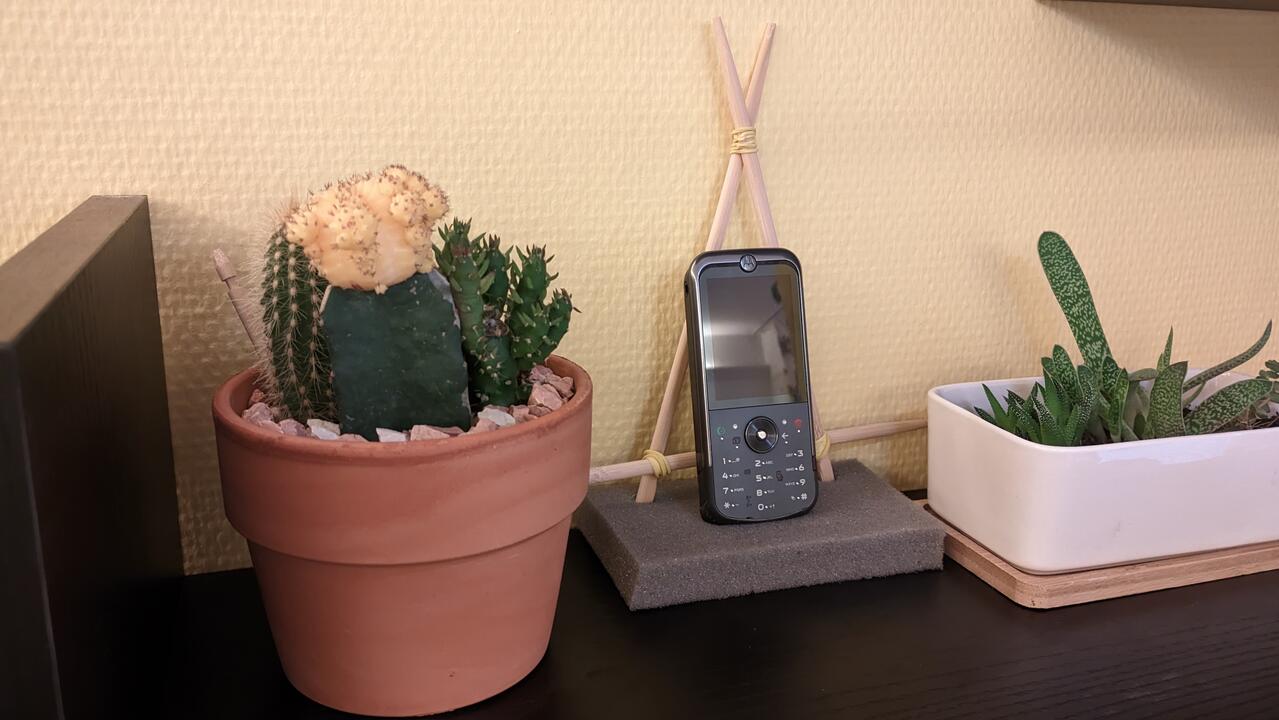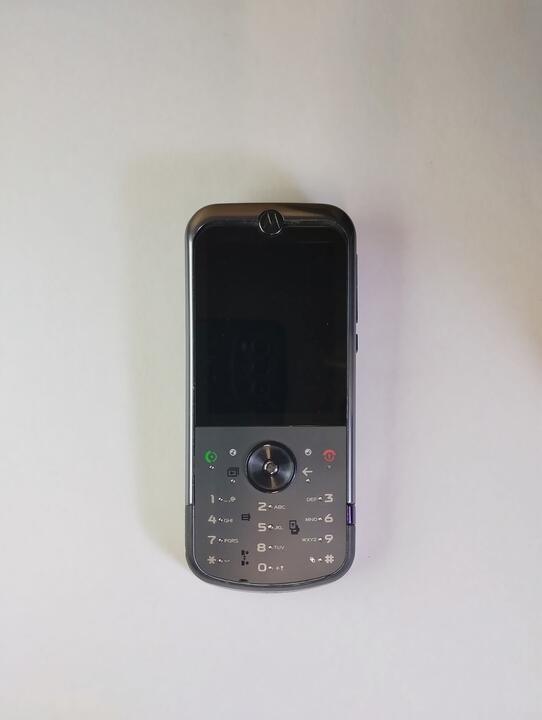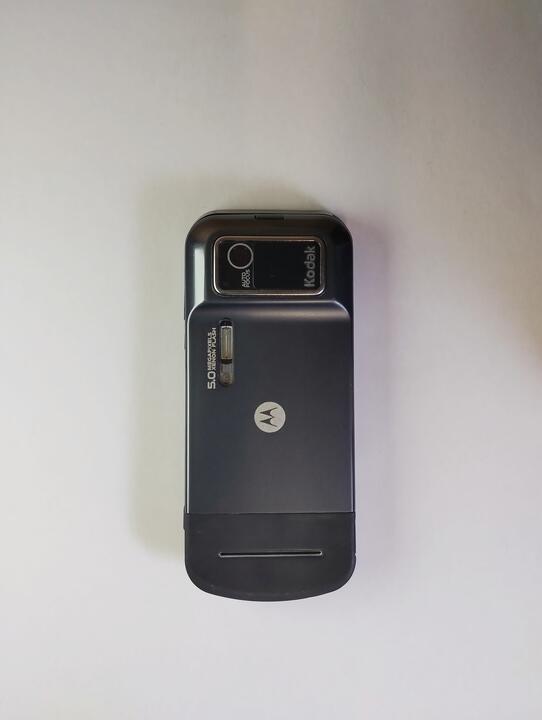Motorola ZINE ZN5
Status: 🟢 fully functional
I’m standing in my university cafeteria, waiting in line at the register with my tray resting on the buffet rails. I turn around by chance—and I see it. A massive screen, elegant curves, shimmering reflections of dark mercury, beautifully accented with deep purple inserts and a matching interface theme. I swear, at that moment, my pupils must have dilated, and my breathing quickened more than when watching late-night erotica on TV. This was one of the best camera phones of its time, and yet, it wasn’t in my hands.
Fourteen years later, I’ve finally corrected that injustice. The Motorola ZINE ZN5 is now mine.
It seems that out of all the branding once printed on phone bodies, only the names of optics manufacturers have survived. And that’s fair—brands need something to show off. This whole trend started back in what now feels like ancient times. Nokia secured Carl Zeiss, flaunting its badge on almost every N-Series model. Sony had its own in-house branding—CyberShot, in this case. Samsung reportedly partnered with Leica for its Innov8 and Omnia HD models. And Motorola, as usual, was late to the party, settling for the leftovers—Kodak, a company that had nearly ignored the inevitable rise of digital photography.
For the average user, this phone didn’t stand out much from its rivals. The world was already familiar with large screens, xenon flashes, and autofocus. Having Linux on board didn’t add much value—it was just another “dumb phone” like the Sony Ericsson K850i, which had launched two years earlier. Sure, it had WiFi, but the Nokia N79, which was easier to find, had that too. Once again, Motorola couldn’t quite keep up.
But for those who knew Motorola well, this phone had something special. It inherited the ModeShift technology from the ROKR E8, also known as the Morphing Keypad.
And once again, Motorola nailed the cohesive aesthetic that ran through all its designs. I was so enamored with the look and feel of the ZN5 that I even asked owners to dump the color theme from the stock firmware for me so I could adapt it for my ROKR E2.
The MOTOMAGX platform meant that well-known modding community favorites like Rockbox, MPlayer, and ZSNES could run on the device. But as I mentioned before, Motorola never officially released an SDK for developers, so native software support never materialized—a real missed opportunity.
Even after all these years, the ZN5 still feels like an alien work of art. The satisfying weight, the cool touch of metal, the crisp, spacious keypad, the little extra buttons and switches. Even the camera on my unit makes a satisfying “vzzzt-vzzzt” sound when opening its shutter. And that diagonal two-step shutter button? Only Sony still puts that kind of detail into today’s smartphones.
Motorola also always delivered great sound—both in calls and through headphones. Audiophiles will appreciate a small surprise here: the ZN5 features a standard 3.5mm headphone jack, which also doubles as an analog TV output.
It took me a long time to track one down, and I spared no expense. For just 50 euros, I didn’t just get the phone—I also scored a promotional stand with a full-sized demo unit. A rare find indeed.
🇺🇦 HELP US HELP OTHERS, SAVE ANIMALS IN UKRAINE
Site map | Powered by crew | © 2025 TiredSysadmin
All photos from Vintage Cellphone and PDA Museum by TiredSysadmin are licensed under Creative Commons Attribution-NonCommercial-ShareAlike 4.0 International.


